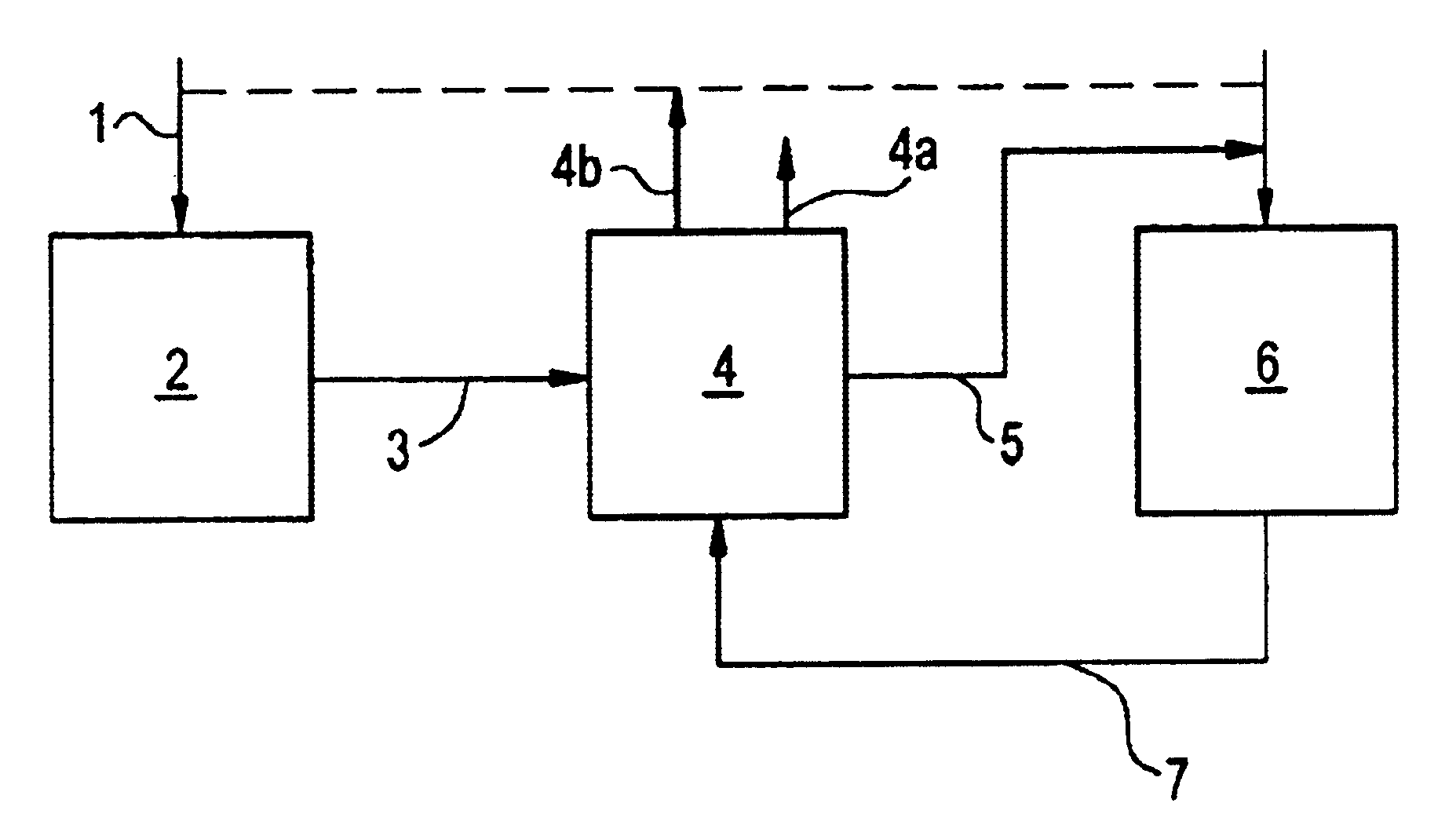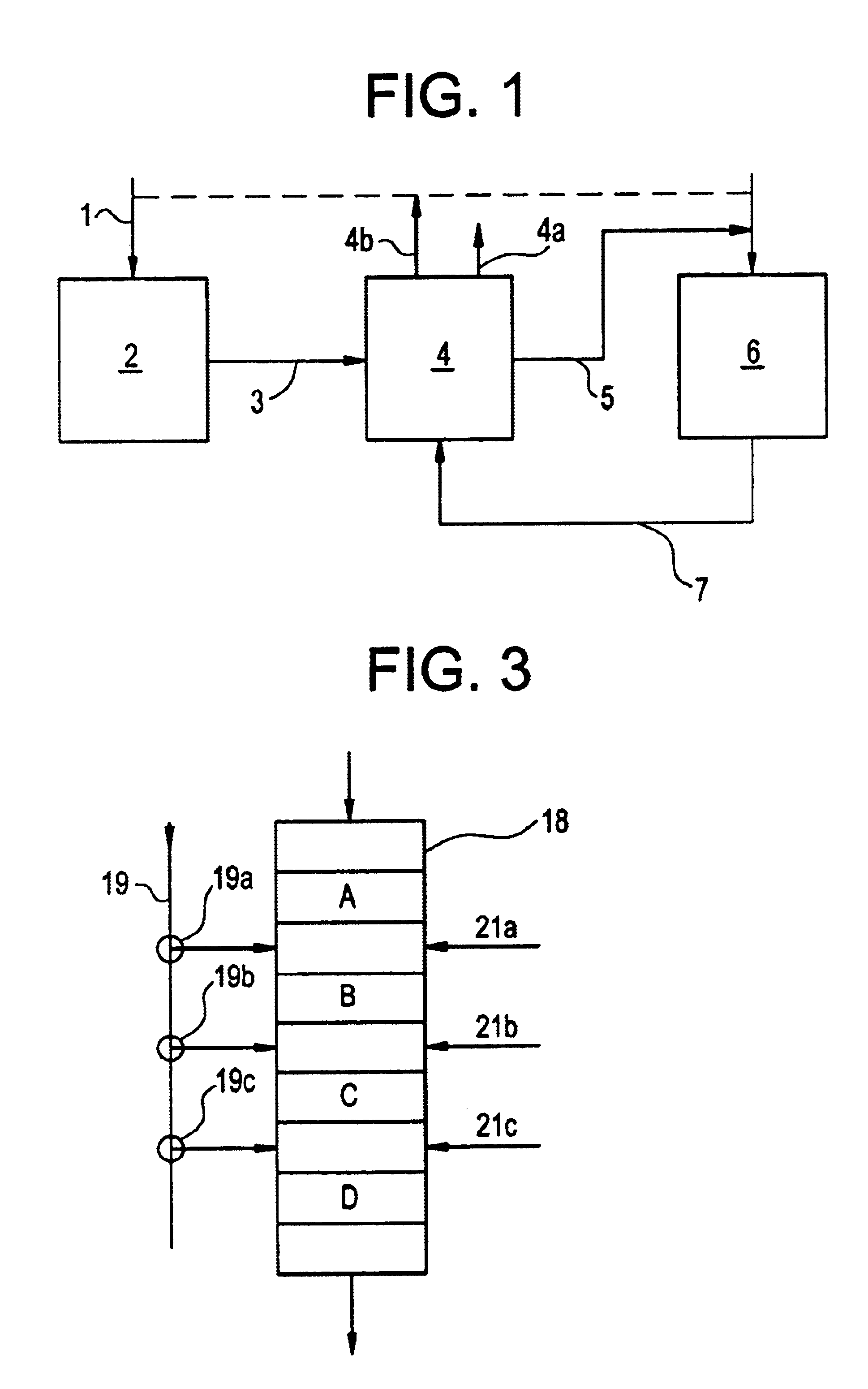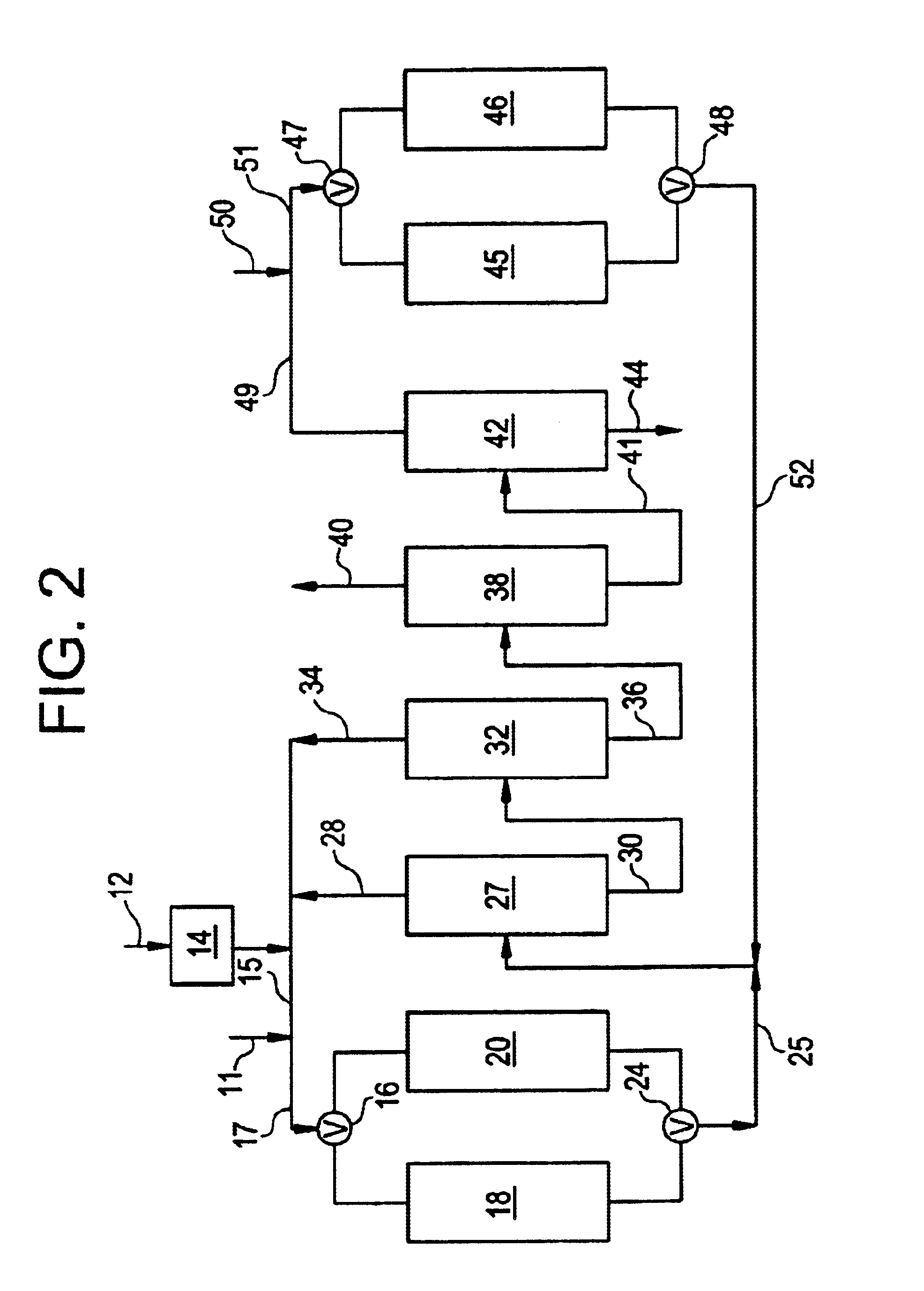Aromatic conversion process employing low surface area zeolite Y
a conversion process and low surface area technology, applied in the field of aromatic compound transalkylation, can solve the problems that the process is not universally followed, and achieve the effect of high porosity, high porosity and high porosity
- Summary
- Abstract
- Description
- Claims
- Application Information
AI Technical Summary
Benefits of technology
Problems solved by technology
Method used
Image
Examples
Embodiment Construction
[0022]A preferred embodiment of the present invention involves vapor phase alkylation of an aromatic substrate comprising benzene in a multistage reaction zone followed by liquid phase transalkylation in which the alkylation and transalkylation reactors are integrated with intermediate separation zones in a manner to effectively provide feed streams to the reactors with recycle of the output from the transalkylation reactor to a benzene recovery zone downstream of the alkylation reactor. In this integrated mode of operation, the transalkylation product is applied to an initial stage of a benzene recovery zone. Subsequent separation steps are carried out in a manner to apply a split feed to the transalkylation reactor. The alkylation reactor is a multistage reaction zone containing at least three series connected catalyst beds which contain a pentasil molecular sieve aromatic alkylation catalyst, preferably a silicalite alkylation catalyst. As described in greater detail below, the s...
PUM
| Property | Measurement | Unit |
|---|---|---|
| Specific surface area | aaaaa | aaaaa |
| Specific surface area | aaaaa | aaaaa |
| Temperature | aaaaa | aaaaa |
Abstract
Description
Claims
Application Information
 Login to View More
Login to View More - R&D
- Intellectual Property
- Life Sciences
- Materials
- Tech Scout
- Unparalleled Data Quality
- Higher Quality Content
- 60% Fewer Hallucinations
Browse by: Latest US Patents, China's latest patents, Technical Efficacy Thesaurus, Application Domain, Technology Topic, Popular Technical Reports.
© 2025 PatSnap. All rights reserved.Legal|Privacy policy|Modern Slavery Act Transparency Statement|Sitemap|About US| Contact US: help@patsnap.com



